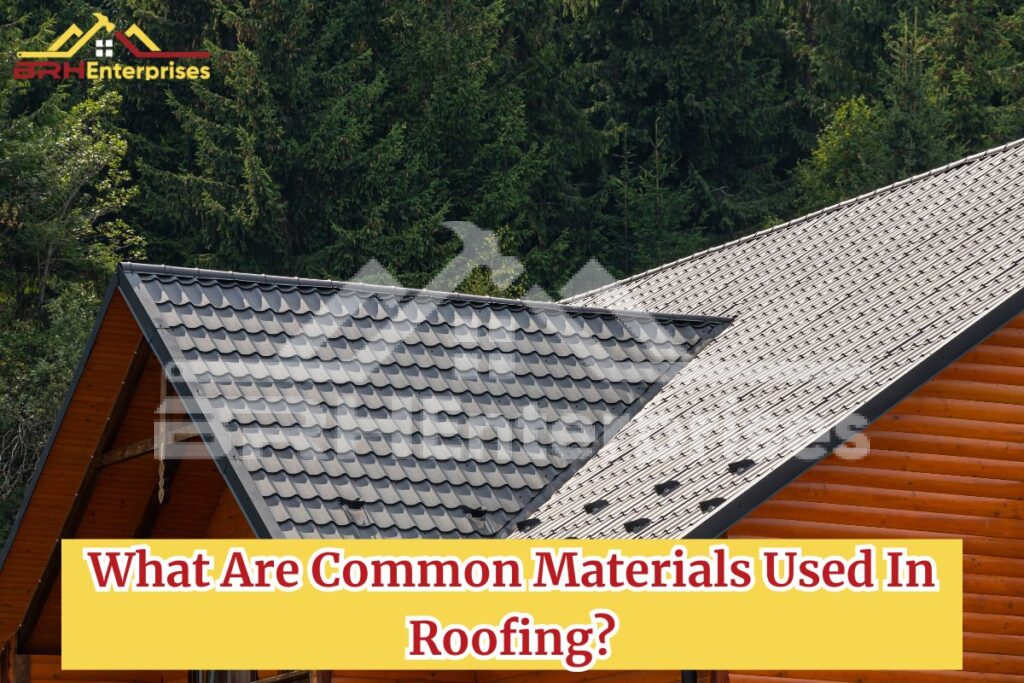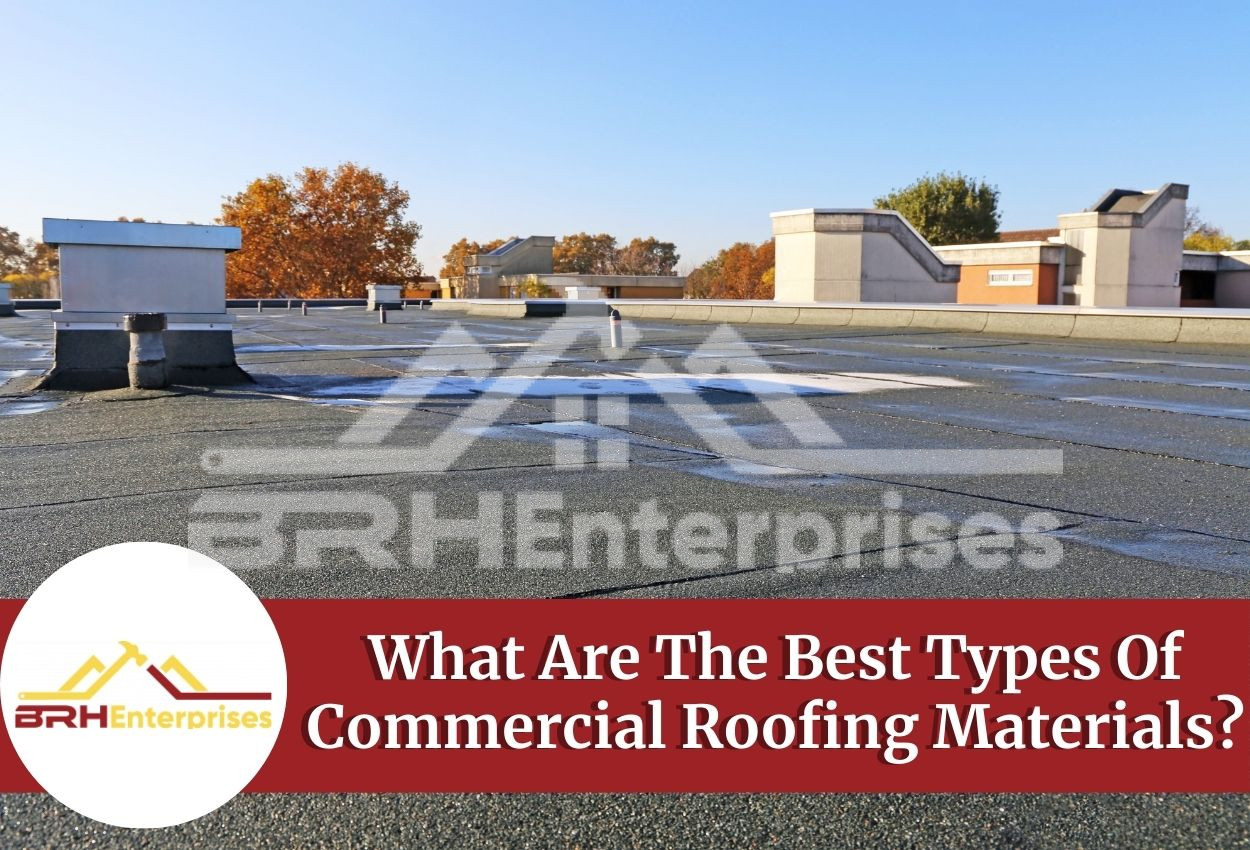Choosing the right material for your roof is really important, and it’s the primary decision you make when considering a roof replacement or installation. We understand it can be confusing because there are many options available.
Today, we are going to cover different types of roofing materials in detail. After reading this complete guide, you will have a clear idea of common roofing materials so you can choose one that suits your home and budget.
At BRH Enterprises, we provide professional roofing services to homeowners and commercial building owners in Wisconsin. We have an experienced team of expert roofers who will address your questions and help you choose the right roofing material for your building. Call us today at (920) 249-4228 to have a one-on-one conversation with one of our experts.
#1 Asphalt Shingles
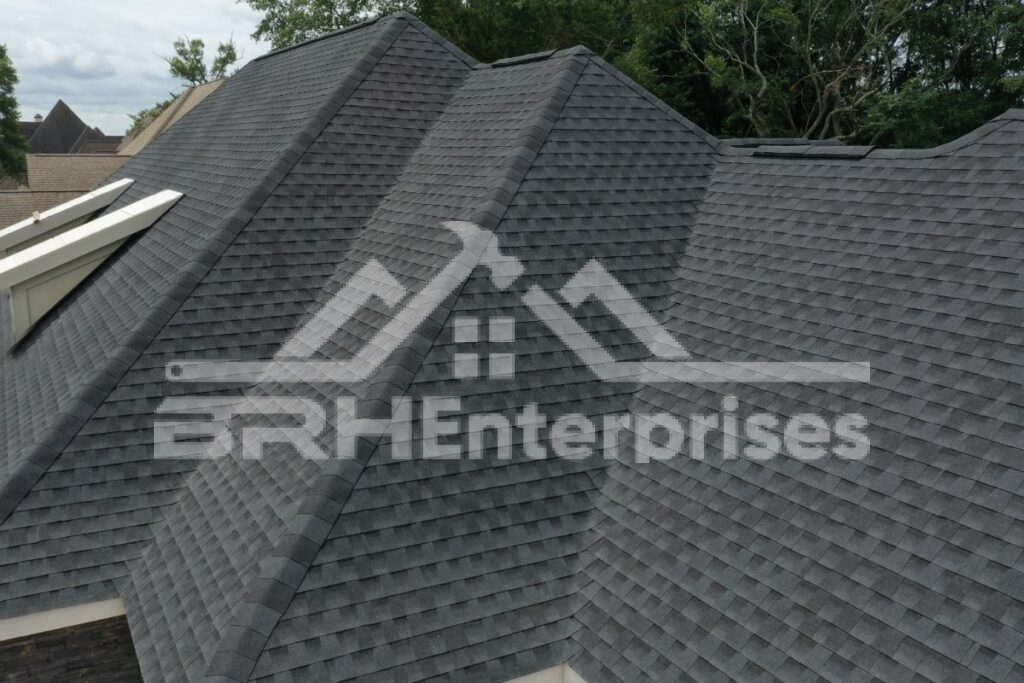
Asphalt shingles remain the most popular roofing material in the U.S., thanks to their affordability and wide availability. They come in three primary types: 3-tab shingles, architectural shingles, and luxury shingles.
3-Tab shingles offer the lowest cost but also the shortest lifespan (15-20 years), while architectural shingles provide a dimensional look and improved durability (20-30 years). Luxury shingles, as the name implies, deliver the best performance and longevity (30-50 years) with a premium aesthetic.
You can find asphalt shingles in a range of colors and styles to match various architectural styles. They’re relatively easy to install, which can translate to lower labor costs. However, they are prone to wind damage, particularly 3-tab shingles, and can develop algae growth in humid climates.
⭐Bonus Tips
- Choose the shingle type that balances your budget and desired lifespan.
- Prioritize proper installation by a qualified roofer and inspect your roof regularly for damage.
Also Read: Understanding the Minimum Slope for Shingle Roofs
#2 Metal Roofs
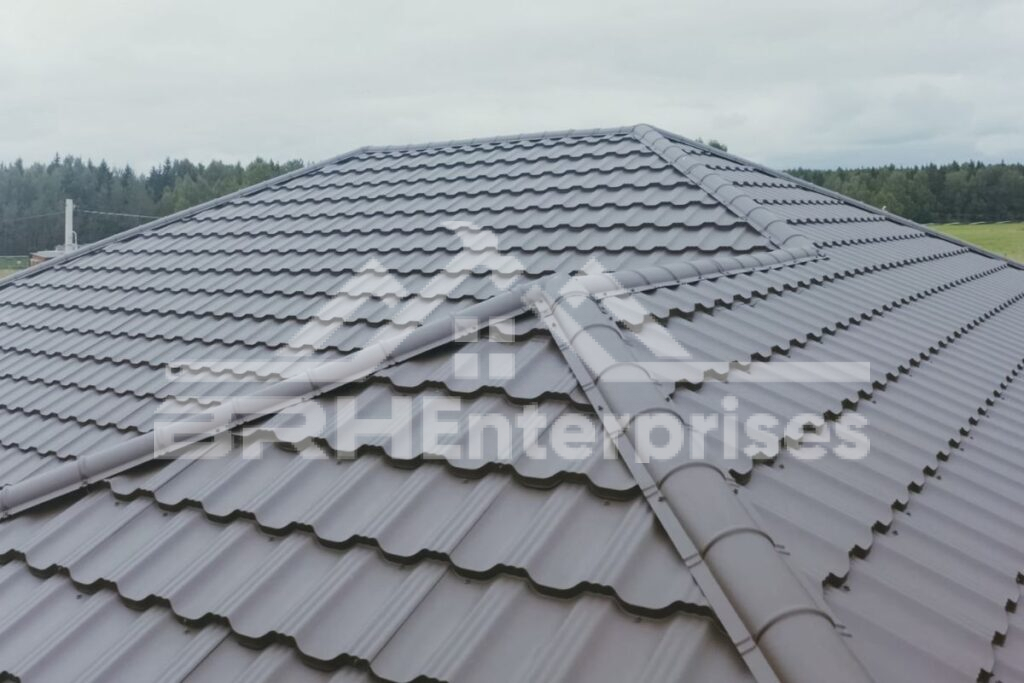
Metal roofs are a long-lasting and durable option, with an average lifespan of 40 to 70 years. They are fire-resistant and can even help lower your energy bills by reflecting sunlight. Metal roofs can also stand tough against harsh winds and storms.
You have plenty of choices when it comes to metal roofing materials. Steel is the most common, but you can also opt for aluminum, copper, zinc, or even tin. The style options are equally diverse, including standing seam panels, corrugated panels, and shingles.
While metal roofs are known for their longevity and performance, they have a higher upfront cost than some other roofing materials.
Also Read: How Much Does Metal Roofing Cost In Wisconsin?
#3 Wood Shingles and Shakes
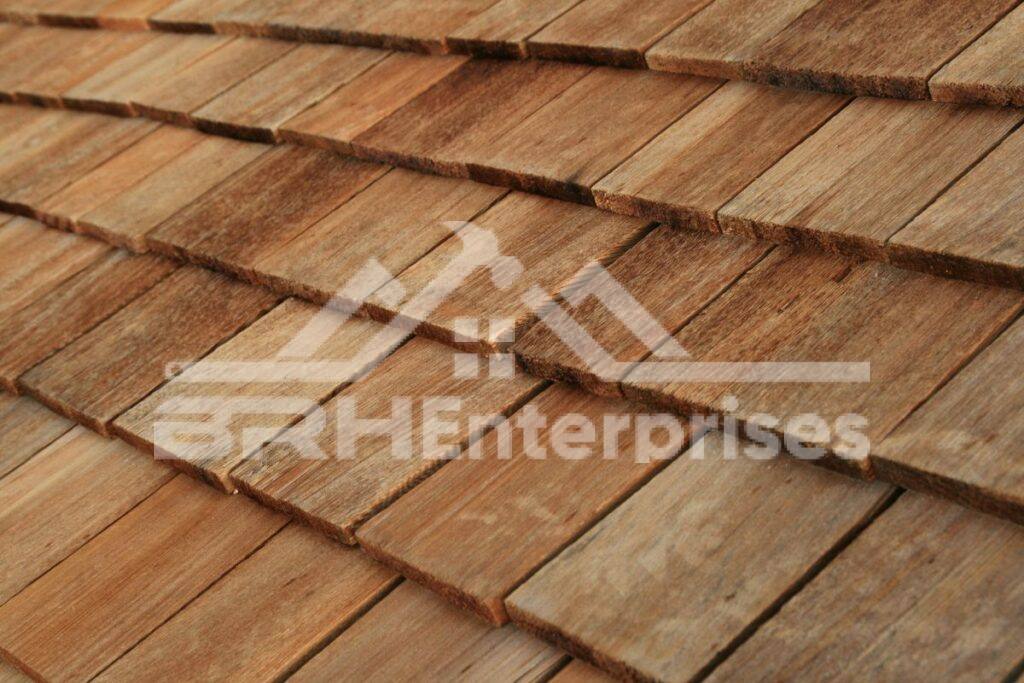
Wood shingles and shakes can give a very natural and beautiful look to any building. Cedar and redwood are popular choices, offering natural resistance to rot and insects. Wood shingles are smooth and uniform, while shakes have a more rustic, textured look.
Wood roofs can last 25-30 years, depending on the type of wood and local climate. They provide natural insulation to some extent, and wood is a renewable resource, making this a relatively eco-friendly option. When browsing your options, check for pressure-impregnated ratings for better fire protection.
⭐Bonus Tips
- Make sure that the type of wood you choose can resist your area’s local climatic conditions.
- Wood shingles and shakes require routine care, so keep up with maintenance to protect your investment.
#4 Slate Roofs
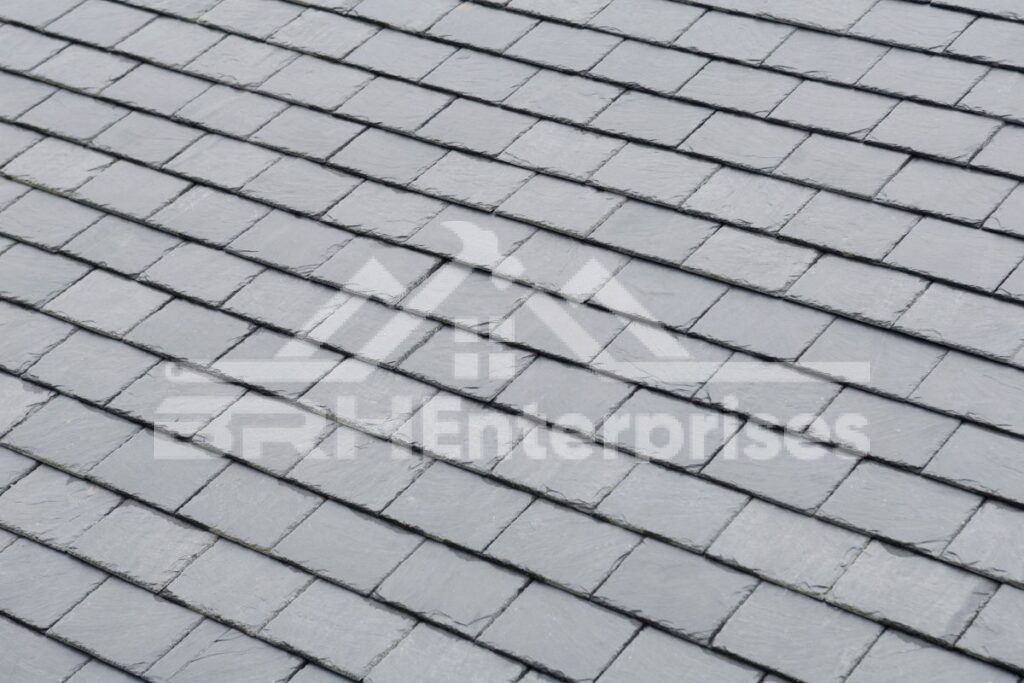
Slate roofs are made of natural stone and can last for a century or more. Slate fire resistant, incredibly durable, and can add beauty to various architectural styles. Slate tiles will cost you more than some other roofing materials, like asphalt shingles, as they have a more complex installation process.
It’s important to consider that because of their heavy weight, slate roofs require a strong roof structure. Plus, finding experienced slate roofers can be challenging, and individual slate tiles can crack if mishandled.
Also Read: Metal vs. Slate Roofing: Which One Is Best For Your Home?
#5 Clay and Concrete Tiles
Clay and concrete tiles bring a Mediterranean flair to your home and are tough against various climatic conditions. They’re fire-resistant, durable, and energy-efficient, helping to keep your home cool in the summer.
Like slate, tile roofs are heavy and require a sturdy roof structure. They can also be expensive, especially clay tiles. Individual tiles can crack if walked on or subjected to heavy impact. Concrete tiles can last for up to 60 years, and on the other hand clay tiles can last for up to 100 years.
⭐Bonus Tip
- It is best to consult your roofer before choosing a tile roof for your home. Experts will check if the existing structure of your home can handle the weight of a tile roof.
#6 Single-Ply Membranes
For flat roofs, single-ply membranes like EPDM, TPO, and PVC are popular choices. We are going to discuss these roofing materials separately below.
They provide great waterproofing, durability, and energy efficiency. Each type has its own unique characteristics, so it’s very important to choose the one that best fits your needs and budget.
- TPO (Thermoplastic Polyolefin)
TPO is made from a blend of polypropylene and ethylene-propylene rubber, and it provides a balance of durability, energy efficiency, and affordability.
TPO roofs have sun and UV reflective properties, which can help reduce cooling costs in hot climates. This roofing material is resistant to UV radiation, weathering, punctures, and chemical exposure. TPO remains flexible even in cold temperatures, making it suitable for various climates.
However, like other single-ply membranes, the seams in TPO roofs can be a potential weak point if not properly welded. TPO can also shrink over time, so proper installation is key. Aesthetically, TPO roofs are typically white or light-colored, offering limited design options.
- EPDM (Ethylene Propylene Diene Monomer)
EPDM, a type of synthetic rubber membrane, is another common choice for flat or low-slope roofs. It’s prized for its exceptional waterproofing capabilities, making it a great choice for areas with heavy rainfall or snow.
EPDM roofs are durable and resistant to UV radiation, weathering, and punctures. They remain flexible even in cold temperatures. EPDM is also a more affordable option than some other flat roof materials.
However, EPDM can be susceptible to damage from oils and solvents, so care is needed during installation and maintenance. The seams can be a weak point if not properly sealed. EPDM roofs are typically black and sometimes white, offering limited aesthetic options.
- PVC (Polyvinyl Chloride)
Polyvinyl chloride, or PVC, is a single-ply membrane known for its durability and resistance to punctures, tears, and chemicals. It’s a popular choice for commercial and industrial buildings where the roof may be exposed to harsh conditions.
PVC also offers fire-resistant properties and energy efficiency thanks to its reflective surface. The heat-welded seams create strong, watertight joints.
However, PVC can be susceptible to shrinkage and can also be more expensive than other single-ply membranes.
⭐ Bonus Tips
- Choose the right thickness (thicker membranes are more durable), hire an experienced installer, and inspect your roof regularly to catch minor damage.
- Avoid using harsh chemicals when cleaning roofing membranes.
#7 Solar Shingles
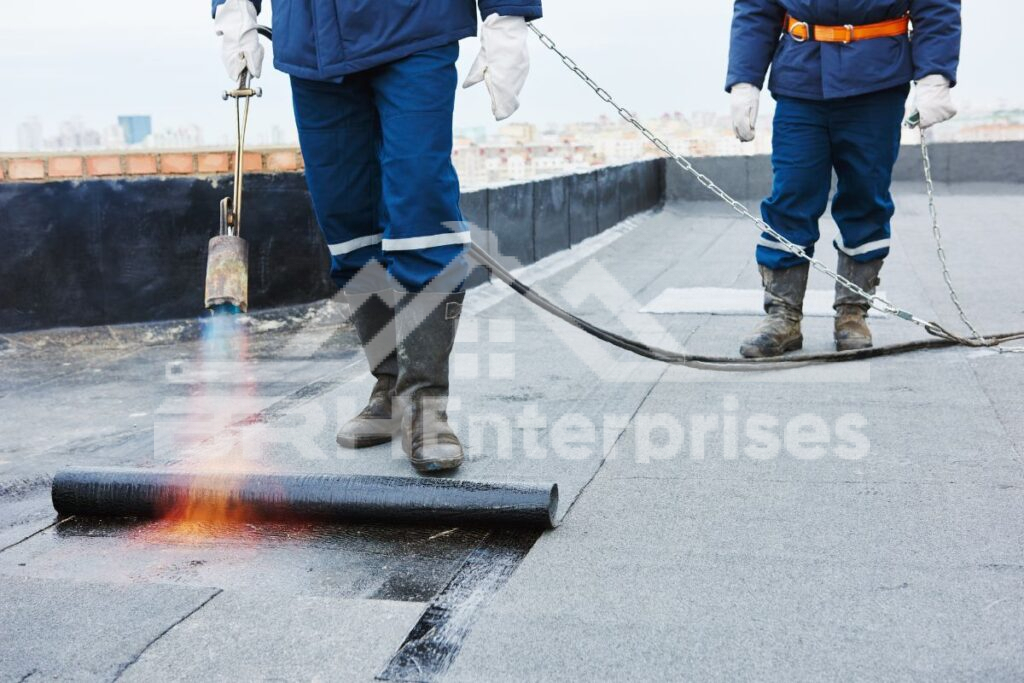
As the name suggest,s solar shingles give a similar appearance like shingle roofs. Solar roofs uses the power of the sun to generate electricity, potentially reducing or even eliminating your energy bills. The initial cost of solar roofs can be significant, but it is worth the investment if you reside in a sunny region.
⭐ Bonus Tips
- Calculate your energy needs, roof suitability, and local incentives before investing in a solar roof.
- Choose a reputable installer and understand the warranty and maintenance requirements of your chosen solar shingles.
#8 Bitumen Roofs
Bitumen is a category that includes both built-up roofs (BUR) and modified bitumen roofs. Both are commonly used on flat or low-slope roofs due to their waterproofing capabilities and durability.
BUR consists of multiple layers of asphalt-saturated felt or fiberglass, while modified bitumen is a membrane enhanced with polymers or rubber for improved performance.
⭐Bonus Tips
- Proper installation is critical for both BUR and modified bitumen roofs, so it is recommended that you hire an experienced roofer in your area.
- Consider adding a reflective coating, as it can help reduce energy costs by reflecting sunlight.
#9 Rubber Slate Roofs
Rubber slate roofs offer a sustainable and lightweight alternative to natural slate. They are typically made from recycled rubber, often from tires, and mimic the look of natural slate tiles while being significantly lighter and easier to install.
With a lifespan of up to 50 years, rubber slate is durable and resistant to impact, fire, and weathering. Its recycled content makes it an eco-friendly choice.
However, it can cost you more than asphalt shingles, and the color options might be somewhat limited compared to natural slate.
#10 Synthetic Shingles
Synthetic shingles are made from materials like polypropylene or polyethylene. These materials are molded to resemble the appearance of traditional roofing materials like slate, wood, or tile, offering versatility in design but with better durability and often a lower price point.
This lightweight roofing option is durable and resistant to impact, weathering, and UV radiation. It generally requires minimal maintenance and can be a more affordable alternative to natural materials.
However, its production and disposal can have a negative environmental impact, and you may find its aesthetic less authentic compared to natural materials.
Final Thoughts
Choosing the best roof material depends on several things:
- How much money you are willing to spend.
- The weather where you live.
- How you want your roof to look.
- How long you want the roof to last.
Most people choose asphalt shingles because they’re affordable and work well for many architectural styles. Metal, tile, and slate roofs cost more but last longer. People often use single-ply membranes for flat roofs, which are durable, reflective, and can save energy.
No matter what material you choose, it’s important to have it installed correctly and maintained. If you do this, your roof will protect your home many years to come.
Hire The Best Rated Roofers For Roof Replacement In Mayville, WI
If you are looking for professional roof replacement in Mayville, WI, and the nearby areas, we are here to assist you. At BRH Enterprises, we aim to provide high-quality roofing services from minor repairs to complete replacements. We use the industry’s best practices and our roofers guarantee quality workmanship.
Our experts will also help you choose the right materials for your roofing system. To get a customized quote or to discuss your project requirements, feel free to call us at (920) 249-4228.

Bryce, Master Roofer
Protect Your Home with Expert Roofing
Don’t wait for leaks or storm damage to cause costly repairs. Our experienced roofing team provides fast, reliable service, high-quality materials, and lasting results. Ensure your home stays safe, secure, and looking great—contact us today for a free estimate.


